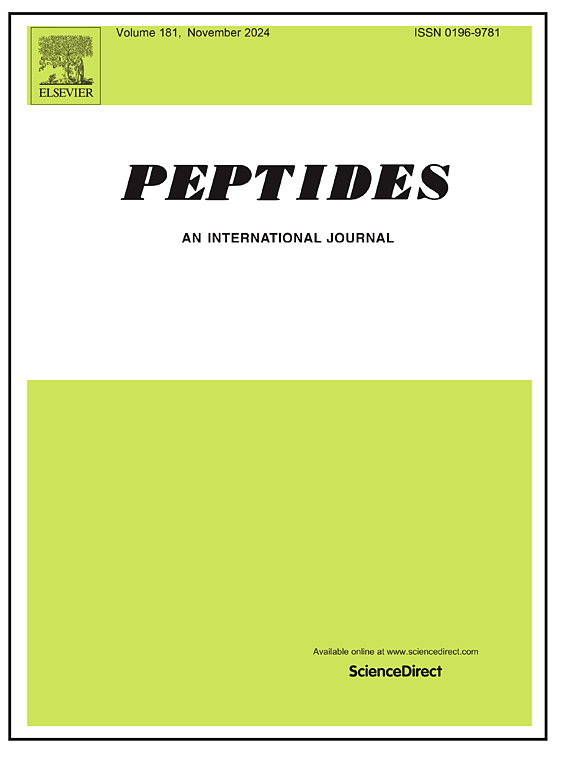Association among nesfatin-1, obesity category, presence of obesity-related complications, and eating patterns in patients with obesity: Results of a single endocrine centre observational study
IF 2.9
4区 医学
Q3 BIOCHEMISTRY & MOLECULAR BIOLOGY
引用次数: 0
Abstract
Since its discovery, nesfatin-1 (N1) has been recognised as an anorexigenic agent potentially related to obesity pathogenesis and development, including its modulatory effect on the brain’s reward system and eating behaviours. As the results from human studies examining the relation between N1 serum levels, body mass index (BMI), and metabolic status are scarce and inconclusive, we aimed to investigate the association between serum N1 levels and obesity categories, obesity-related complications, and disturbed eating behaviour. We studied 110 patients with obesity divided into obesity categories according to their BMI and metabolic status. N1 was measured in a fasting state (N10) and 2 h after a glucose load (N12) and correlated with anthropometric measurements, serum analysis, and the presence of selected obesity-related complications. Neither N10 nor N12 correlated significantly with obesity; however, N10 tended to be high in patients with a high BMI. A positive correlation was observed among N12, fat-free mass (p = 0.022), and muscle mass (p = 0.02). We found positive correlations between N10 and N12 with aspartate aminotransferase (p = 0.012 and p = 0.022, respectively) and alanine aminotransferase (p = 0.027 and p = 0.006, respectively). Patients with dyslipidaemia had significantly higher N10 (p = 0.03) and N12 (p = 0.049) levels. Neither N10 nor N12 correlated significantly with disturbed eating behaviour; however, low N10 levels were associated with a hedonic eating pattern (p = 0.03). N1 may be involved in the pathogenesis of obesity and obesity-related complications; however, owing to the complex mechanisms of its secretion and action, further clinical and experimental research is needed.
肥胖患者的nesfatin-1、肥胖类别、肥胖相关并发症和饮食模式之间的关系:一项内分泌中心观察性研究的结果
自发现以来,nesfatin-1 (N1)已被认为是一种厌食因子,可能与肥胖的发病和发展有关,包括其对大脑奖励系统和饮食行为的调节作用。由于人类研究N1血清水平、体重指数(BMI)和代谢状态之间关系的结果很少且不确定,因此我们旨在调查血清N1水平与肥胖类别、肥胖相关并发症和饮食行为紊乱之间的关系。我们研究了110例肥胖患者,根据BMI和代谢状况将其分为肥胖类别。N1在空腹状态(N10)和葡萄糖负荷后2 h (N12)测量,并与人体测量、血清分析和选择的肥胖相关并发症的存在相关。N10和N12与肥胖均无显著相关性;然而,N10在BMI高的患者中往往较高。N12、无脂质量(p = 0.022)和肌肉质量(p = 0.02)呈正相关。我们发现N10和N12与天冬氨酸转氨酶(p = 0.012和p = 0.022)和丙氨酸转氨酶(p = 0.027和p = 0.006)呈正相关。血脂异常患者N10 (p = 0.03)和N12 (p = 0.049)水平显著升高。N10和N12与饮食行为紊乱均不显著相关;然而,低N10水平与享乐饮食模式相关(p = 0.03)。N1可能参与肥胖及肥胖相关并发症的发病机制;但由于其分泌和作用机制复杂,需要进一步的临床和实验研究。
本文章由计算机程序翻译,如有差异,请以英文原文为准。
求助全文
约1分钟内获得全文
求助全文
来源期刊

Peptides
医学-生化与分子生物学
CiteScore
6.40
自引率
6.70%
发文量
130
审稿时长
28 days
期刊介绍:
Peptides is an international journal presenting original contributions on the biochemistry, physiology and pharmacology of biological active peptides, as well as their functions that relate to gastroenterology, endocrinology, and behavioral effects.
Peptides emphasizes all aspects of high profile peptide research in mammals and non-mammalian vertebrates. Special consideration can be given to plants and invertebrates. Submission of articles with clinical relevance is particularly encouraged.
 求助内容:
求助内容: 应助结果提醒方式:
应助结果提醒方式:


